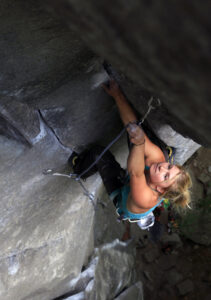Finding Calm
Feature type Story
Read time 10 min
Published May 26, 2022
Author Hazel Findlay
Photographer David Pickford
To say there’s a correlation between positive mental health and time spent outdoors is hardly ground-breaking. But the more we develop and obsess over our abilities in those environments – berating yourself for missing the same hold three times in a row, fixating over beating your best time or simply becoming jaded by the same landscapes that once filled you with awe – the easier it becomes to offset those positive aspects. So how do we make sure we optimise the effects of the time we spend outside?
Hazel Findlay is a mental training coach and one of the world’s most accomplished climbers – which means she’s almost certainly spent more time belaying her climbing partners than anyone you know. Recently, she’s realised that might not be such a bad thing.
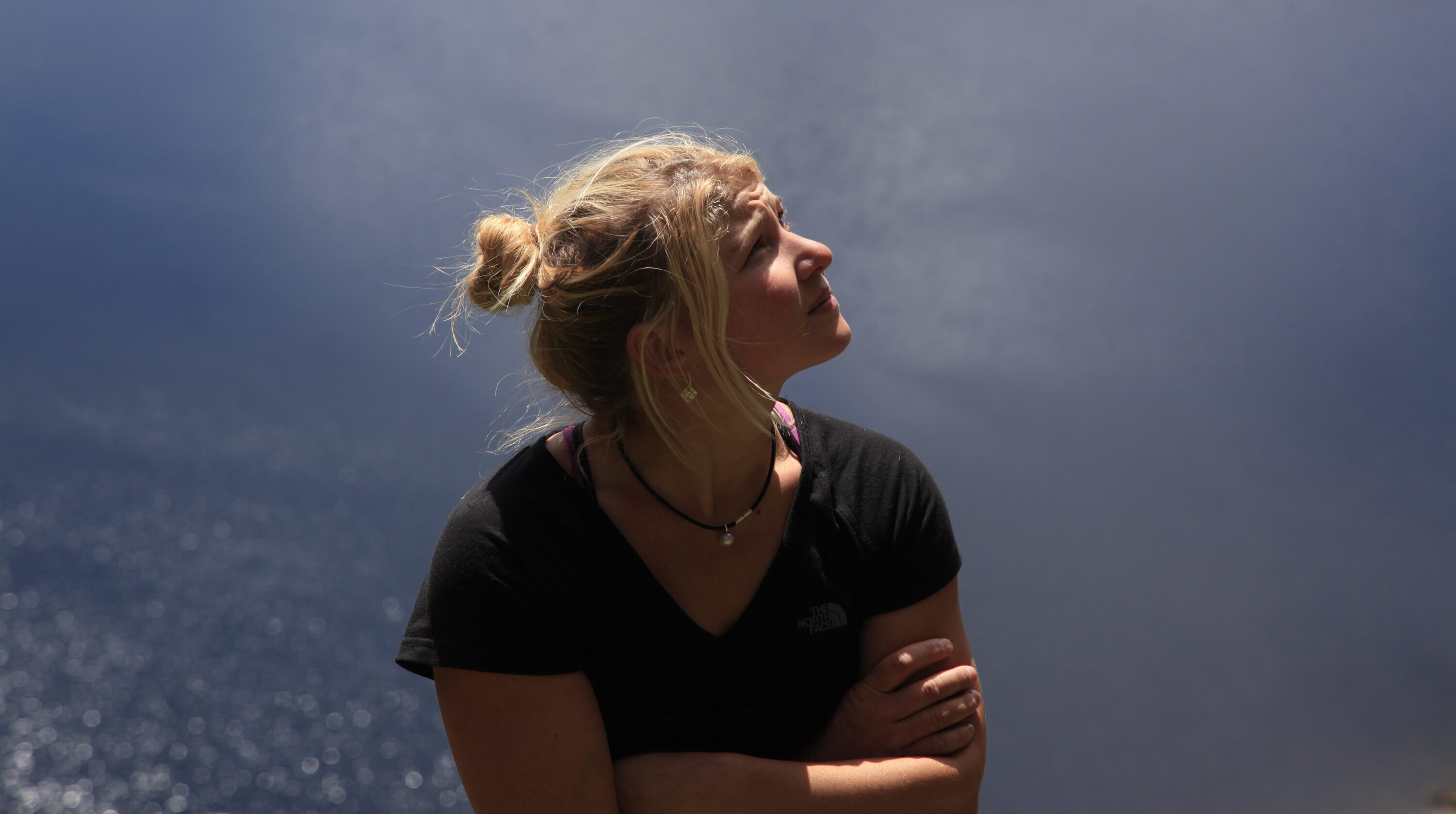
Belaying has a PR problem. Most climbers I know see it as a chore, particularly those who climb trad. It’s a long and tedious process, obligation anchoring you to the stance, the source of many a neck issue.
The action itself does require attention; we need to pay out slack when our partner clips, provide vital, vigorous encouragement by cheering them on when they most need it and it goes without saying, you must never, ever let go of the ropes! At first, that’s engaging enough. But even if someone is climbing something really exciting, right at their limit, they still might spend ten minutes at a rest doing nothing. Or twenty at the top of a route finding enough protection to make a secure belay with which to bring you up. Tedium, rather like cold hands or a stiff neck, begins to encroach on the experience.
In the modern world we’re rarely left alone without some form of entertaining distraction, and the mental requirements of belaying are infinitely less engaging than almost anything else we’ll do on any given day. Human attention is a scarce commodity, and unlike other boring things in life or at work, you can’t excuse yourself for a timely toilet break or quick cup of coffee. Tethered to a rock for an hour, obediently clutching the ropes, you can begin to feel like a dog tied to a lamppost, with nothing to do and nowhere to go, patiently waiting for your owner to return from the shop.
Not so long ago, I was on a cliff top chatting with a few others when a young, blonde climber offered his friend a ‘catch’ on a route that he’d been practising. The route in question was particularly long and slow, the belay likely to last over an hour. The friend was concerned it would be an inconvenience. With a slightly twitchy look about him, the blonde climber said it would be ‘good for him’, that belaying was the only time that he could really be ‘still’. A conversation ensued about how the monotony of belaying might actually be its most important quality.
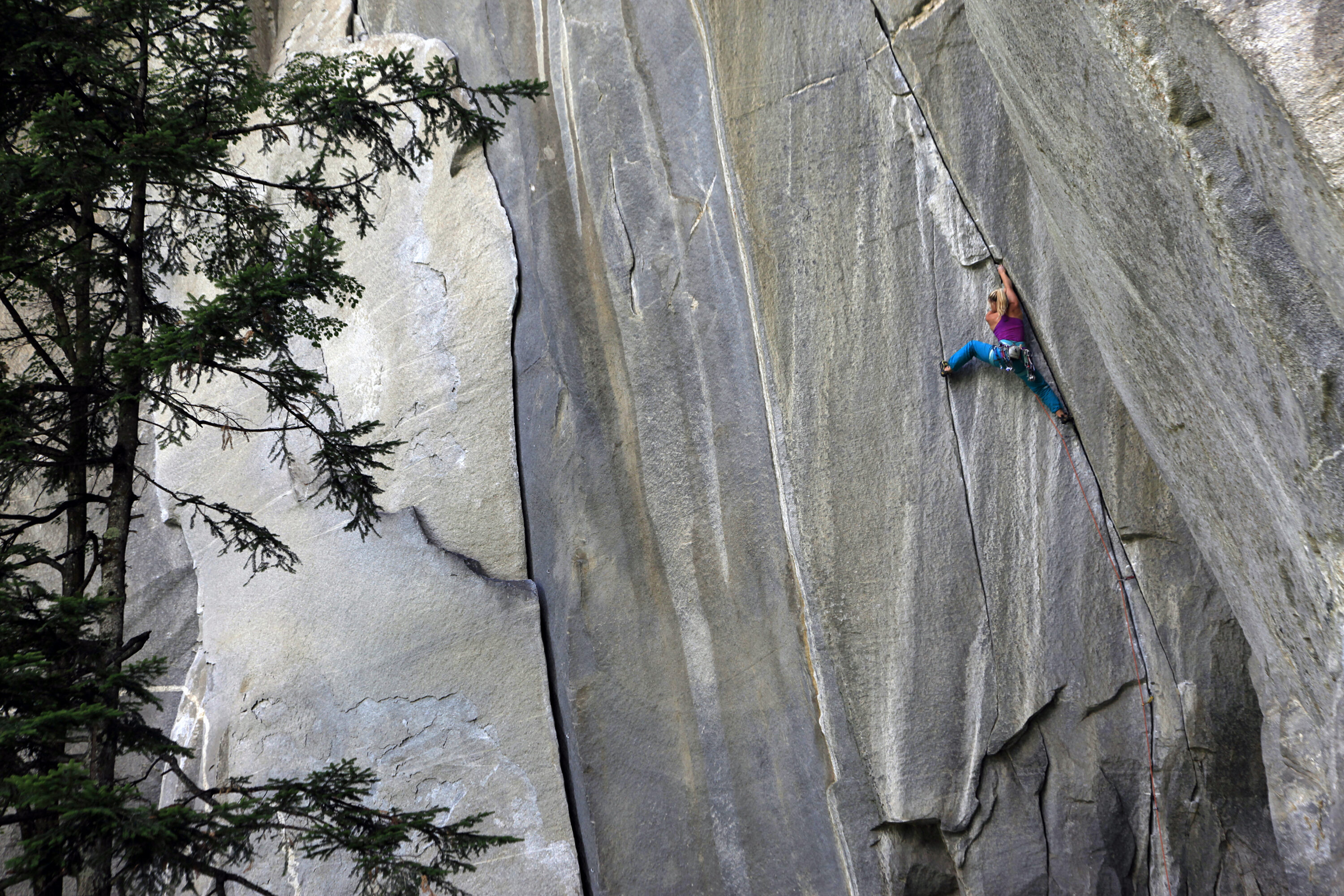
Can we stop and enjoy a murmuration of starlings on that 5am run? Or are we too busy trying to beat our mate’s Strava time?
As outdoor enthusiasts, we understand the relationship between access to natural spaces and mental health. During COVID-19 lockdowns many people were separated from the great outdoors. For those confined to cities, the best they might have hoped for was a walk along the pavement. We’re only now beginning to understand the cost of those restrictions on our mental health and recent studies have found a strong correlation between reduced mental health and those restrictions. Studies have also found that contact with nature provided a buffer against the negative effects of lockdown on our mental health. These conclusions might seem obvious to outdoor-types, but what is it about time spent outdoors that’s so good for our mental health and what can we do to make our time outdoors even better?
Of course, exercise itself is important. More than just burning calories, there is a mental respite to be found in physical exertion and a deep level of engagement particularly in the complex movements of climbing. But we can find those benefits in indoor sports too. Why is it then that we prefer to be outside? Perhaps it’s the sense of awe and wonder that we find in nature, or the feeling of calm in leaving the hustle and bustle of the city behind. It’s likely a healthy mix of all these things and more. I’m not sure we or science can fully explain it. I have a suspicion however, that it’s also something to do with presence.
Outdoor people – we’re doers. We are the people who’d rather spend hours digging a pointless hole on the beach than sunbathing. I live near Llanberis in Wales, one of the outdoor capitals of the UK. I’m surrounded by people who already do four sports and are in the process of learning two more. The sort of people that get up at 5am to go for a run in the hills before work, which is most likely an outdoor-related job like guiding, then spend the majority of their earnings on kit.
We have the ‘doing’ part covered, but what about the ‘being’ part? Can we stop and enjoy a murmuration of starlings on that 5am run? Or are we too busy trying to beat our mate’s Strava time? Can we be satisfied with a slower pace? A walk in the woods instead of a downhill mountain bike ride? Do we take the time to simply be in these beautiful places we end up in or are we just too busy doing? If we end up somewhere nice with nothing to do, how long until a phone appears in our hands to take a picture, message a friend or scroll through Instagram, comparing where we are to the photos we see on the screen?
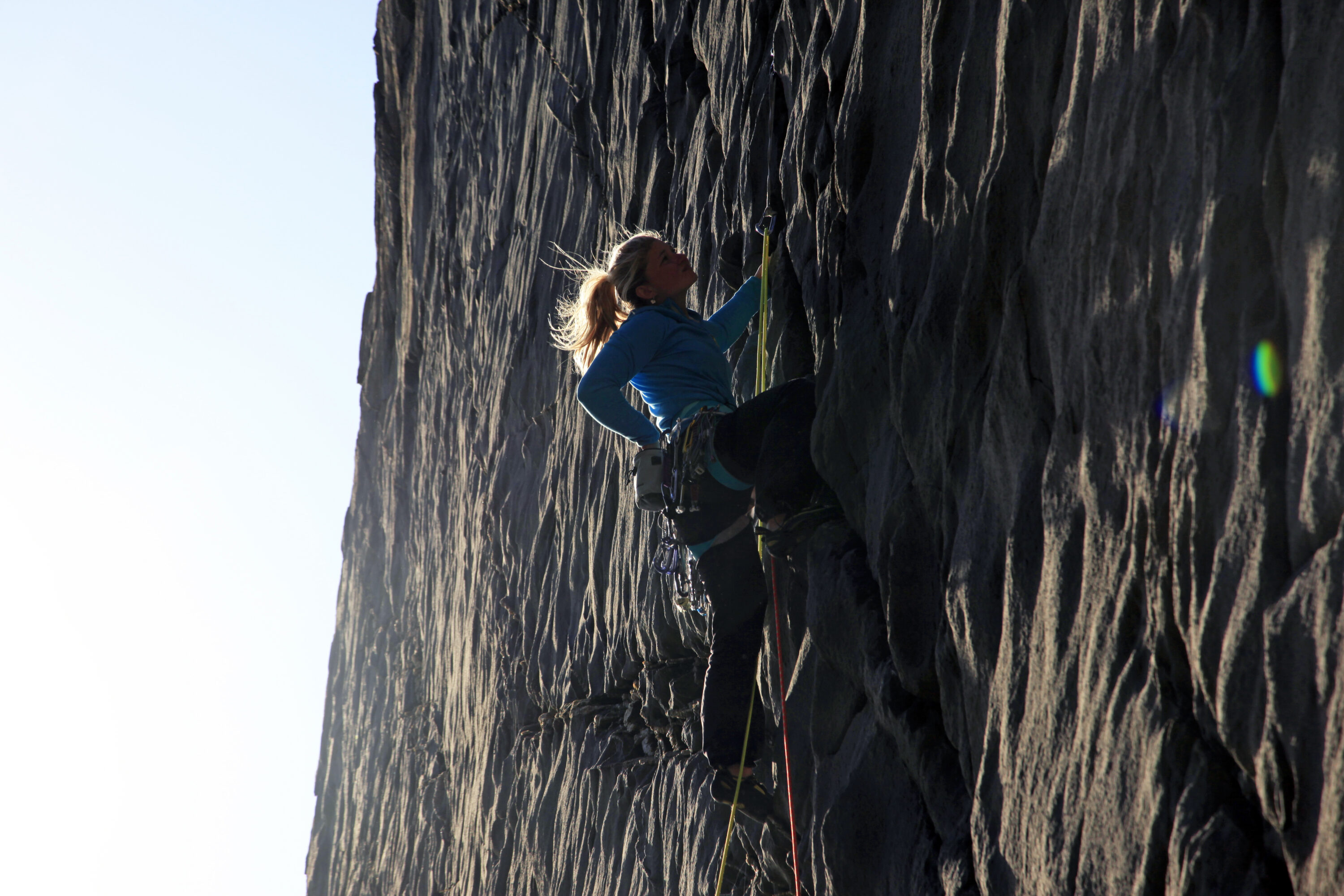
You wouldn’t be wrong in saying that belaying is a thing that we do but in reality, very little of our precious attention is needed for large portions of belay stints. Surely then, during those periods when your climber is resting on the route or fumbling for protection to construct a safe anchor, that time then becomes a unique opportunity to admire the place we are in, to be, without doing (much), if just for a moment. In between keeping a dutiful eye on your climbing partner, perhaps we could admire our surroundings mindfully, just as they are, not wishing them to be different. I’ve spent many a peaceful moment strapped to a sea-cliff waiting for my partner to pull up the ropes, simply admiring the enormity of the ocean. Honestly, some particularly slow belays do start with a little, simmering frustration, but with the right mindset I can give in to the experience of just being without doing.
As I get older and I delve deeper into my own mental wellbeing, I notice that my capacity to be OK in this moment without distraction is inextricably linked to that wellbeing. To practise meditation is to train this skill and presentness, but your practice doesn’t have to be sitting on a cushion in the lotus position, it could be waiting for your partner to untie a stuck clove hitch at the top of the crag. In reality, we can meditate anywhere, like standing in the checkout queue at the supermarket. Sure, it’s a lot easier when we are surrounded by the awe-inspiring, calming beauty of nature. For that reason, a prolonged belay stint could be the most important, enriching thing you do all day, not only for your climbing partner but for your own mental wellbeing too.
From this point onwards, I intend to fully appreciate the presentness, peace and ‘being’ of belay-time – will you join me?
Don’t miss a single adventure
Sign up to our free newsletter and get a weekly BASE hit to your inbox
You might also like
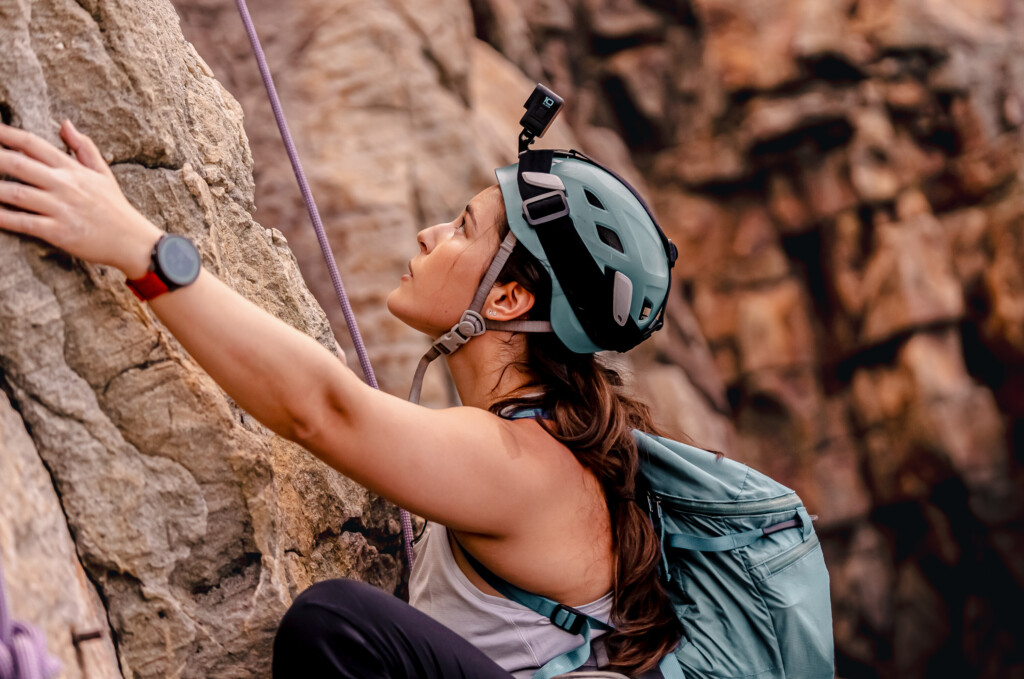
Photo Essay • BASE editorial team • Mar 18, 2024
Hunting happiness through adventure in Taiwan
BASE teams up with adventurer Sofia Jin to explore the best of Taiwan's underrated adventure scene.
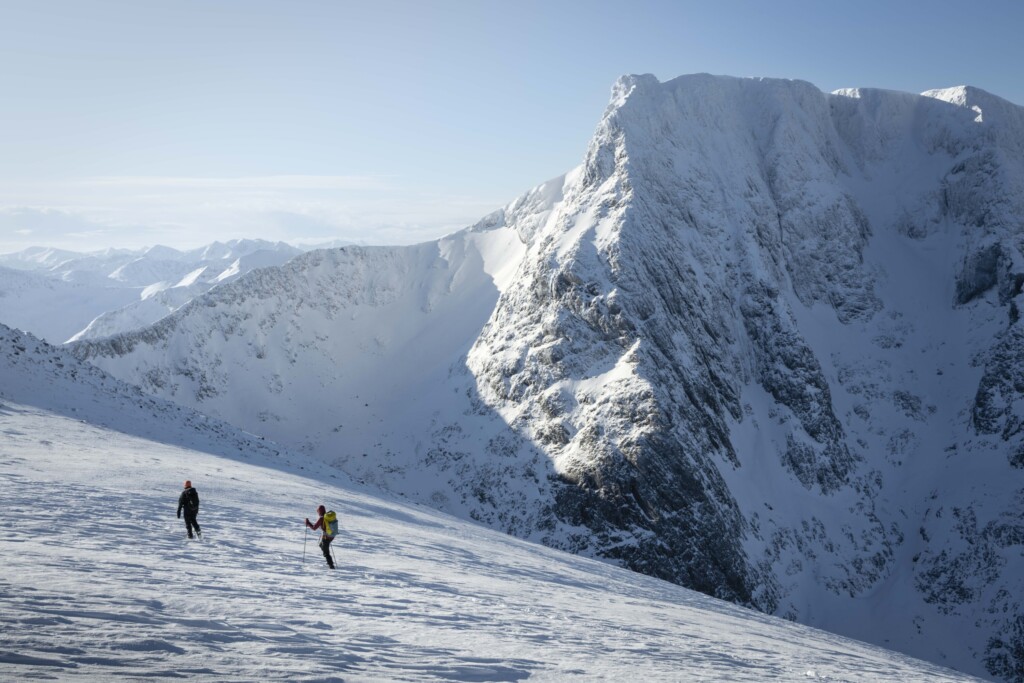
Story • BASE editorial team • Nov 21, 2023
Five Epic UK Climbs You Should Try This Winter
Craving a snowy mountain adventure? Inspired by the Garmin Instinct 2 watch (into which you can directly plan these routes), we've compiled a list of five of the best for winter 2023-24!


Video • BASE editorial team • Jul 04, 2023
Zofia Reych On Bouldering, Life And Neurodivergence
Climbing is a driving force in Zofia's life, but for a long time, it also seemed to be a destructive one
